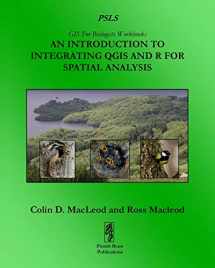
An Introduction To Integrating QGIS And R For Spatial Analysis (GIS For Biologists Workbooks)
Book details
Summary
Description
This workbook is a companion volume to GIS For Biologists: A Practical Introduction For Undergraduates. It is designed to augment the information on using GIS in biological research provided in that book, as a result, it assumes that the reader already as some level of familiarity with GIS. In addition, it has been specially written based around free-to-access, open source software. Specifically, it uses two such packages, QGIS for the GIS-based components, and R for statistical analyses. Working with both of these packages, rather than just one or other, allows you to make the most of the specialist tools available within each of them.
It contains five exercises which demonstrate how to integrate QGIS and R to allow you to conduct high quality spatial analyses by accessing and combining the powerful mapping, data layer creation, editing and processing tools from QGIS and the equally powerful analytical tools from R. These exercises are based around data from a real biological field study and include: creating a GIS project to process your data and create a map suitable for publication; creating environmental raster data layers; linking environmental data to biological data and creating graphs from the resulting data set; and running statistical analyses (GLMs and GAMs) to investigate spatial relationships in this combined data set.
Working through these five exercises will help the user obtain experience in integrating QGIS and R for spatial analysis, and provide them with the confidence to apply these skills to their own research. These exercises are presented in the same easy-to-follow flow diagram-based format used in GIS For Biologists: A Practical Introduction For Undergraduates. They are accompanied by images which show the user how their spatial analysis project should look as they progress through the exercises, allowing them to compare their own work to the expected results.
The PSLS series of books uses Task-Oriented Learning (TOL) to teach the practical application of research skills to the life sciences. This involves demonstrating how these skills can be used in the specific circumstances in which they are likely to be required rather than concentrating on teaching theoretical frameworks or on teaching skills in a generic or abstract manner. By seeing how the similar processes are used to achieve a variety of different goals within a specific field, it becomes easier for the reader to identify the general rules behind the practical application of these processes and, therefore, to transfer them to novel situations they may encounter in the future.


We would LOVE it if you could help us and other readers by reviewing the book
Book review



